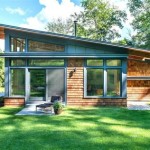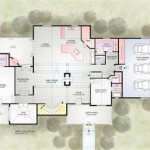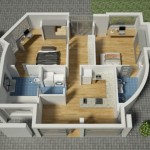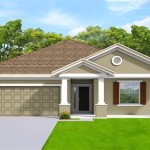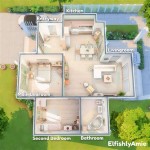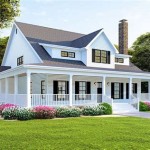House Plans With Indoor Pools: A Comprehensive Guide
The integration of an indoor pool into a residential property represents a significant investment in both lifestyle and property value. House plans incorporating indoor pools require careful consideration of architectural design, engineering principles, and environmental controls. This article delves into the key aspects of designing and constructing homes with indoor pools, exploring various design options, essential technical requirements, and the factors that contribute to a successful implementation.
Design Considerations for Indoor Pools
The design of a home with an indoor pool should prioritize the integration of the pool area with the rest of the living space. Achieving this integration effectively enhances the aesthetic appeal of the home and ensures the pool area is a functional and enjoyable part of the overall living environment. Several design elements must be meticulously considered to achieve this synergy.
Firstly, the location of the pool within the house plan plays a crucial role. Common locations include basements, dedicated sunrooms, or extensions to the main living area. Basement installations offer privacy and temperature stability, but structural modifications and drainage considerations are essential. Sunrooms provide natural light and ventilation, but require careful attention to insulation and humidity control. Extending the main living area allows for seamless integration but demands a cohesive design that complements the existing architectural style.
Secondly, the architectural style of the pool area must harmonize with the overall design of the house. Contemporary designs might feature clean lines, large glass panels, and minimalist decor, while traditional designs could incorporate classic architectural elements, such as columns, arches, and ornate detailing. The choice of materials, colors, and finishes should be consistent throughout the home to create a unified aesthetic.
Thirdly, the accessibility of the pool area is a significant design factor. Direct access from living areas, bathrooms, and changing rooms is desirable. Consider incorporating sliding glass doors or large openings to create a sense of openness and facilitate easy movement between the pool and other parts of the house. Safety features, such as non-slip flooring and pool covers, should be integrated into the design to minimize the risk of accidents.
Essential Technical Requirements for Indoor Pools
Beyond aesthetic considerations, the construction of an indoor pool necessitates adherence to stringent technical requirements to ensure structural integrity, environmental control, and water quality. These requirements encompass structural engineering, HVAC systems, and water treatment technologies.
Structural engineering is paramount. The weight of the water exerts significant pressure on the pool structure and the surrounding building elements. Reinforced concrete is typically used for the pool shell, and the foundation must be designed to withstand the additional load. Soil conditions must be thoroughly assessed to prevent settlement or shifting, which could compromise the pool's integrity. Furthermore, the structural design must account for seismic activity in earthquake-prone regions.
HVAC (Heating, Ventilation, and Air Conditioning) systems are critical for maintaining a comfortable and healthy indoor environment. Indoor pools generate significant humidity, which can lead to mold growth, structural damage, and respiratory problems. A dedicated dehumidification system is essential to remove excess moisture from the air. The system should be sized appropriately for the pool’s surface area and usage patterns. Ventilation is also crucial to circulate fresh air and prevent the buildup of chlorine fumes or other potentially harmful gases. Heating systems must maintain a consistent water temperature and air temperature to ensure swimmer comfort and prevent condensation.
Water treatment is another vital aspect of indoor pool maintenance. Effective filtration systems are necessary to remove debris, algae, and other contaminants from the water. Chemical treatment, typically involving chlorine or bromine, is required to sanitize the water and prevent the growth of bacteria. Regular water testing and adjustments are essential to maintain proper pH levels and minimize the risk of skin irritation or other health problems. Automated water treatment systems can simplify maintenance and ensure consistent water quality.
Factors Contributing to a Successful Indoor Pool Installation
Numerous factors influence the success of an indoor pool installation, ranging from project planning to ongoing maintenance. A comprehensive approach that addresses these factors is crucial for achieving a long-lasting and enjoyable amenity.
Firstly, meticulous project planning is essential. This involves engaging experienced architects, engineers, and contractors who have a proven track record of designing and constructing indoor pools. A detailed budget should be established, and contingency funds should be allocated to cover unexpected expenses. A realistic timeline should be developed, and regular progress meetings should be held to ensure the project stays on track. Obtaining all necessary permits and approvals is also crucial to avoid legal complications.
Secondly, material selection plays a significant role in the long-term performance of the pool and the surrounding structure. Materials that are resistant to moisture, chlorine, and other chemicals should be used. Tile, stone, and concrete are common choices for pool finishes, while durable paints and coatings should be used on walls and ceilings. Selecting high-quality materials can minimize maintenance requirements and extend the lifespan of the pool.
Thirdly, ongoing maintenance is critical for preserving the integrity and functionality of the indoor pool. Regular cleaning of the pool and the surrounding area is essential to prevent the buildup of algae and debris. Water chemistry should be monitored and adjusted regularly. The HVAC system should be serviced annually to ensure optimal performance. The pool structure should be inspected periodically for signs of damage or deterioration. Proactive maintenance can prevent costly repairs and ensure the pool remains a valuable asset for years to come.
Lighting also plays a crucial role in the overall ambiance of an indoor pool area. Natural light is desirable, but artificial lighting is necessary to supplement it, especially during evenings. Consider incorporating a combination of ambient, task, and accent lighting to create a visually appealing and functional space. LED lighting is a popular choice due to its energy efficiency and long lifespan. Underwater lighting can enhance the aesthetic appeal of the pool and improve visibility for swimmers. Lighting control systems can be used to adjust the lighting levels and create different moods.
Sound control is another important consideration, especially in shared living spaces. The acoustics of an indoor pool area can be challenging due to the hard surfaces and the presence of water. Consider incorporating sound-absorbing materials, such as acoustic panels or fabric-covered walls, to reduce reverberation and improve sound quality. The placement of speakers and other audio equipment should be carefully planned to minimize noise pollution in other parts of the house.
Landscaping can enhance the visual appeal of an indoor pool area and create a more relaxing atmosphere. Plants can add a touch of nature and help to soften the hard surfaces. However, it is important to choose plants that are tolerant of high humidity and chlorine exposure. Artificial plants are a low-maintenance alternative. Consider incorporating water features, such as fountains or waterfalls, to create a calming ambiance.
Ultimately, the successful integration of an indoor pool into a home requires a holistic approach that considers architectural design, engineering principles, environmental controls, and ongoing maintenance. By addressing these factors comprehensively, homeowners can create a luxurious and enjoyable living space that enhances their quality of life and adds significant value to their property.

Striking Home Plan With Indoor Pool 72402da Architectural Designs House Plans

Luxury French Country Home Plan With Courtyard And Indoor Pool 290110iy Architectural Designs House Plans

Contemporary Style House Plan 2 Beds 3 Baths 2283 Sq Ft 60 763 Indoor Pool Plans Shed

Indoor Pool House Mansion Floor Plan Plans

Indoor Swimming Pools House Plans And More

Indoor Swimming Pools House Plans And More

Indoor Swimming Pool And Jacuzzi Area Free Design 3d House Ideas Marina G By Planner 5d

House Plans Pool Courtyard Plan W72108da Wrap Around Central With Large New Indoor

2 Story Modern Home Plan With Indoor Pool 85270ms Architectural Designs House Plans

House Plans With Pools Luxury Home Floor Swimming

